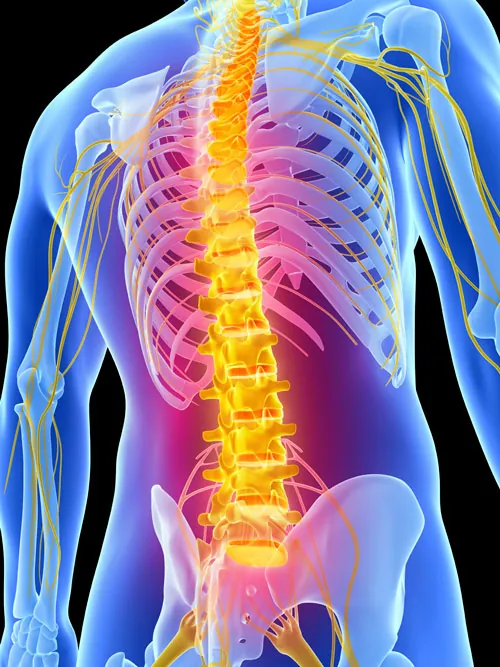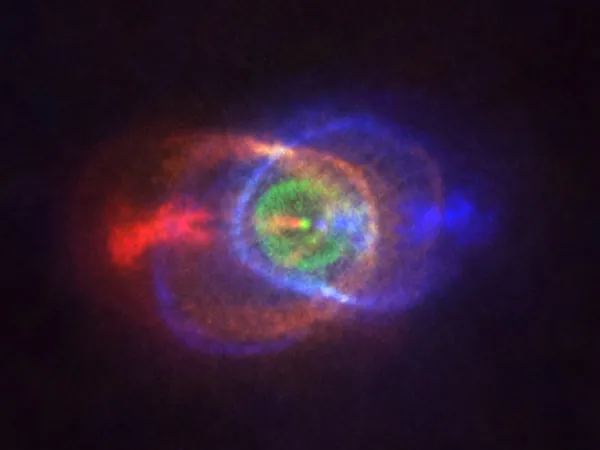
The Surprising Connection Between Netrin1 and Spinal Cord Development: What Scientists Just Discovered
2024-11-18
Author: Noah
Groundbreaking Discovery by UCLA Researchers
In a groundbreaking study, researchers at the Eli and Edythe Broad Center of Regenerative Medicine and Stem Cell Research at UCLA have unveiled a surprising function of the protein Netrin1, previously known primarily for its role in guiding axons during embryonic development. While Netrin1 has been linked to various physiological processes, including cancer progression, diabetes, and organ differentiation, its influence on the developing nervous system had not been fully understood until now.
Significant Findings Published in Cell Reports
Published in Cell Reports, the study titled “Netrin1 patterns the dorsal spinal cord through modulation of BMP signaling” suggests that this molecular architect does more than just direct neural connectivity; it plays a critical role in organizing the spinal cord during the early stages of development.
According to Dr. Samantha Butler, a key author of the study, this discovery arose from a curious observation about Netrin1's unexpected functionality. "We’ve long recognized Netrin1 as a powerful architect of neural circuits, but its role in spinal cord organization was completely unforeseen," Butler explained.
The Role of Netrin1 in Spinal Cord Organization
The spinal cord houses specialized regions for processing sensory inputs like touch and pain, and its proper development hinges on precise spatial organization. This meticulous compartmentalization is heavily influenced by Bone Morphogenetic Protein (BMP) signaling, which must remain localized to ensure the correct formation of neurons in the dorsal region—responsible for sensory function—separate from motor and interneuron regions in the ventral side.
Researchers found that Netrin1 serves as a vital boundary keeper for BMP signals. Graduate student Sandy Alvarez noted that without Netrin1’s modulation, the result could be a disorganized neural network, jeopardizing nerve cell targeting.
Mechanism of Action: Netrin1 as an Adhesive
Butler’s team further discovered that Netrin1 acts more like a 'sticky adhesive surface' that guides axons along specific pathways instead of merely providing distant cues. In experimental setups with chicken and mouse embryos, they observed that the introduction of a traceable version of Netrin1 resulted in the disappearance of axons, indicating a repression of BMP activity.
Implications for Future Research and Application
In manipulating Netrin1 levels, the research team uncovered that increased levels led to the loss of particular dorsal nerve cell populations, whereas its removal fostered their growth. Further analysis revealed that Netrin1 influences the regulation of RNA translation, thereby indirectly inhibiting BMP function.
Butler is enthusiastic about future applications of their findings. "Netrin1 is the most powerful architect of neuronal circuits that I have ever worked with," she stated, highlighting potential avenues for therapeutic interventions in spinal cord injuries or nerve damage.
Broader Implications Beyond the Spinal Cord
The implications of this research could extend beyond just the spinal cord. Given that Netrin1 and BMP are expressed throughout various organs, understanding their interactions could revolutionize approaches to treating cancers or developmental disorders where these proteins play a role.
Conclusion: A New Era in Regenerative Medicine
As scientists push forward with this new knowledge, they aim to not only decode the mysteries of spinal circuitry but also to harness Netrin1's capabilities to rebuild and repair damaged neural pathways, opening a window to innovative treatments for nerve injury patients. Stay tuned as this thrilling discovery unfolds—could it reshape the future of regenerative medicine?









 Brasil (PT)
Brasil (PT)
 Canada (EN)
Canada (EN)
 Chile (ES)
Chile (ES)
 España (ES)
España (ES)
 France (FR)
France (FR)
 Hong Kong (EN)
Hong Kong (EN)
 Italia (IT)
Italia (IT)
 日本 (JA)
日本 (JA)
 Magyarország (HU)
Magyarország (HU)
 Norge (NO)
Norge (NO)
 Polska (PL)
Polska (PL)
 Schweiz (DE)
Schweiz (DE)
 Singapore (EN)
Singapore (EN)
 Sverige (SV)
Sverige (SV)
 Suomi (FI)
Suomi (FI)
 Türkiye (TR)
Türkiye (TR)